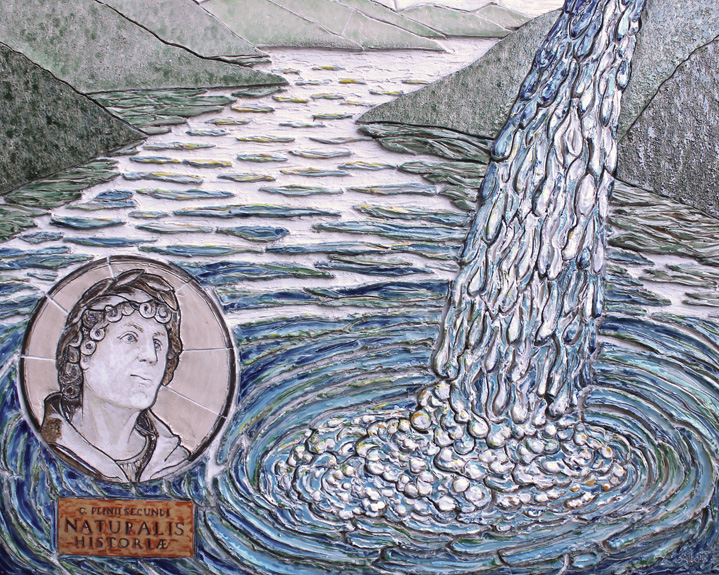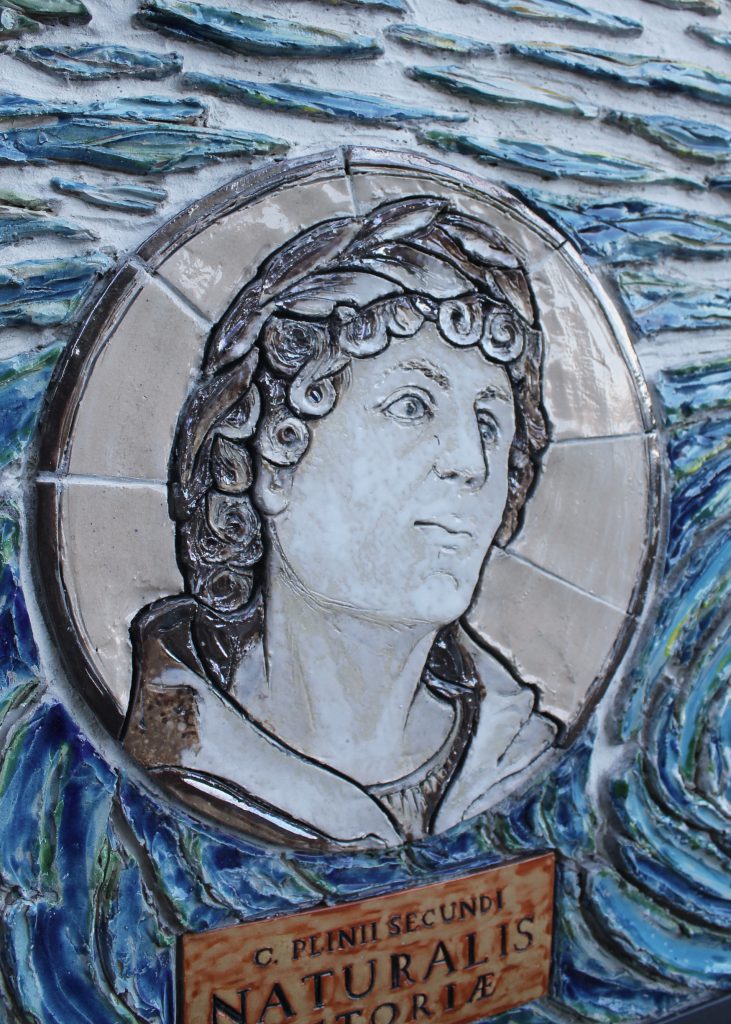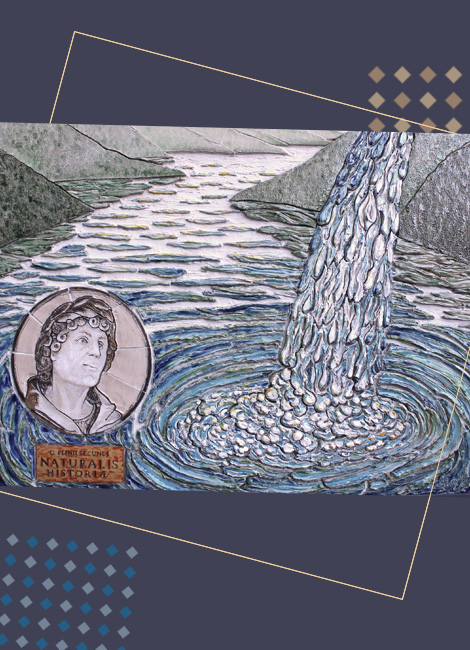
Mosaic form:
Authors: Emilio Alberti
Year of publication: 2020
Map:
Information about the work:
The work is a tribute to Pliny the Elder and his Naturalis Historia. It meant contributing to Pliny's bimillenary celebrations, which began in Como in November 2019 with an exhibition at the Palazzo del Broletto.
The project idea draws from the exhaustive work of Gaius Plinius Secundus, known as Pliny the Vecchio, born in Novum Comum, today's Como, in 23 or 24 A.D., in which he collected the foundations of knowledge in a humanistic-scientific synthesis. The Naturalis Historia is a grand and innovative survey of all the Nature known in antiquity, from the life of man to the history of the peoples of the Roman Empire to the
description of plants and animals. Passionate scholar, and an imperial official, his figure is fundamental to the cultural and scientific formation of the contemporary world. Admiration for all that exists permeates his work, studied and translated as one of the significant reference texts in comparing Ancient and Modern. It is an inexhaustible source of news, including political and moral information, and it shines through the ideal to which Pliny conformed his life: the living and constant desire to learn, in the conviction that knowledge is the fundamental condition of human existence. He had considerable influence on humanistic studies and the Renaissance.
Pliny the Elder is undoubtedly the most crucial figure in the history of the Larian territory.
"Divine it is for the mortal to help the other mortal" precisely how Pliny the Elder died: coordinating rescue operations during the eruption of Mount Vesuvius in 79 AD.
A medallion with Pliny's portrait stands out in the mosaic, echoing the sculpture in the aedicule on the facade of Como Cathedral juxtaposed with that of Pliny the Younger, has as its background the Larian landscape with in the foreground the jet of a fountain rippling the surface of the water: an apparent reference to the springs, the waterways of the Larian territory and the waters of Lake Como. It symbolises the concept expressed by Pliny about Nature as universal life, a breath of the cosmos: "I speak of Nature, that is, of life." In Nature, man can find the tools to improve his life. The rules for a proper relationship with Nature are inherent in Nature itself, it is up to man to discover them, and Pliny offered himself as a passionate guide.
One cannot but be amazed at the incredible relevance of these words written by Pliny, the Elder, two thousand years ago, in which we recognise the ecological spirit that permeates contemporary reality: "We pollute both rivers and the elements of Nature, and we make harmful the very air we breathe" (Naturalis Historia XIII.3-4).
Technique used:
The technique is that of glazed ceramics, and the colours are obtained with glazes, crystals and oxides. Following the design, the tiles are moulded in different sizes and shapes of white refractory clay. In a more perspective way, some parts in the foreground are rendered in slight relief, giving the work a sculptural value and the peculiar plasticity of bas relief. Some features of the work are left visible in the background consisting of white outdoor cement glue.
Author’s website:
Photo Gallery:


